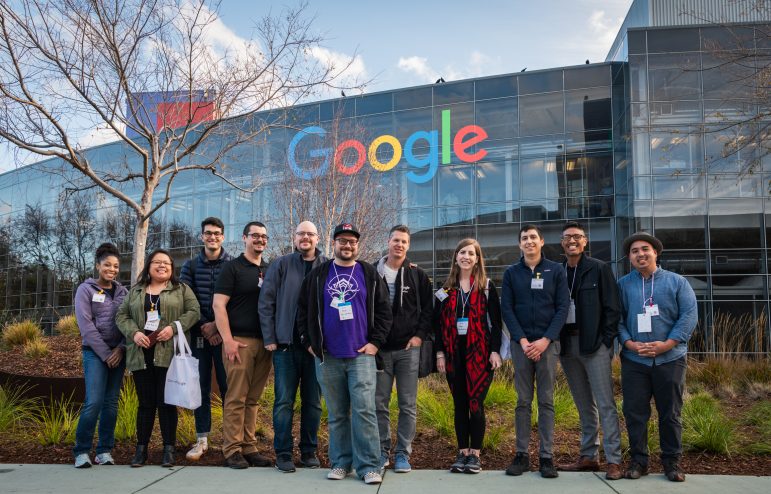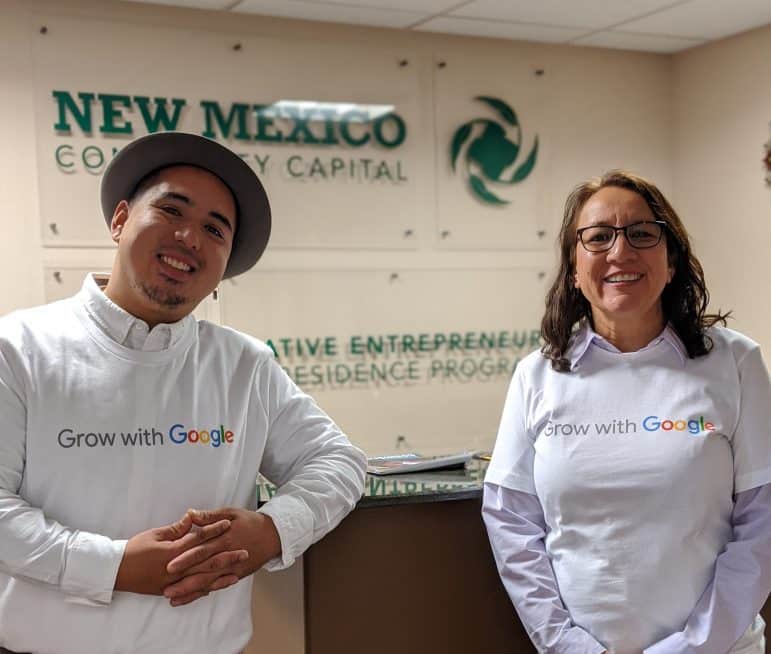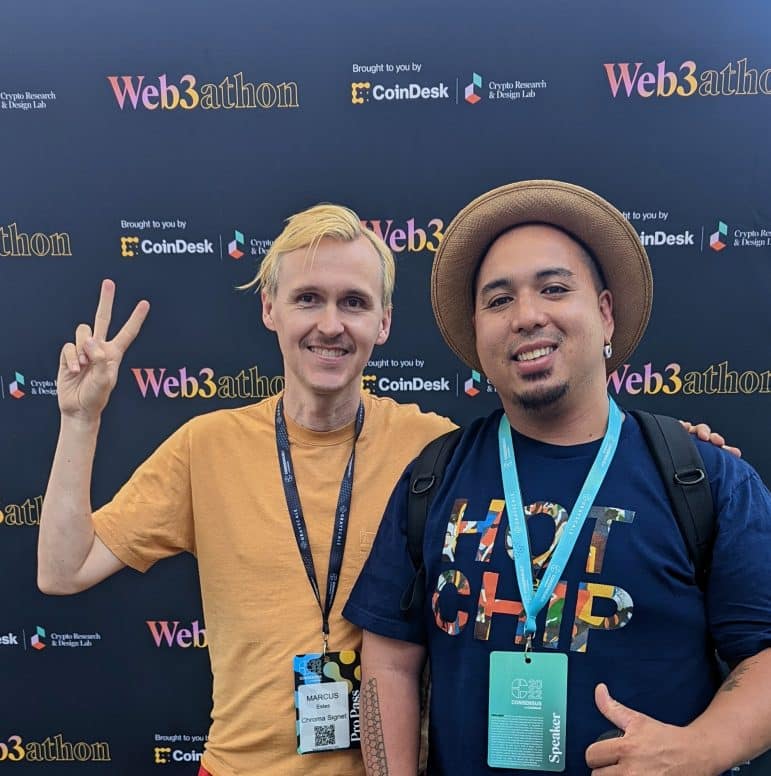A Tech Path Forward

Grow with Google, NCAI Summit participants, 2020
Technology is something that seems pervasive in our daily lives. From social media platforms to emails, the skills needed to effectively communicate have changed. Being able to communicate an idea or persuade a group of people to take action requires a skill set that can be learned and honed through practice. Digital tools have helped me effectively communicate ideas and educate my community. Assistive tools like voice-to-text and collaborative documents have helped me refine my skills in the art of pitching an idea. It is because of this that NMCC has continued to be early adopters of engaging technology platforms that can support Native entrepreneurs and help community leaders grow their audience. From being a Google Partner to learning about the fast evolving Web3 blockchain technology, it is important that we recognize and identify our ancestral knowledge and skills that our ancestors possessed like tracking, refining, and translating to seek new knowledge and share it. I would like to share our collective journey of seeking new knowledge and tools to revolutionize and grow our Indigenous small businesses.
My name is Henry Jake Foreman and I am the Program Director at New Mexico Community Capital. I’ve worked for this organization for over 4 years and before this I was a high school teacher, research assistant, and entrepreneur in NMCC’s Native Entrepreneur in Residence program. As a researcher and educator, I became enamored with Indigenous ways of knowing and learning. These ways of knowing expand the definition of knowledge by not only incorporating the materialistic world view, but rather finding the connections between all things such as nature and even the cosmos and through the aether. This passion became my purpose through applied research and projects that related to indigenizing business and experiential education. The idea of praxis, connecting theory with practice, guided all of my curriculum because its main thesis is reflecting on the world in order to transform it. It meant that I had to look deep within myself to learn my own cultural identity to understand how I can best serve our community and planet. This cultural understanding also helped me define my core values and ethics so that I can have a strong foundation to guide me through life. Understanding the elements of culture also helped provide a new insight into understanding how we learn best as Indigenous people. For instance, language, music, fashion, and art are all important elements of our culture but are just the tip of the iceberg. Understanding the cultural nuances of individuals, tribes and regions have allowed me to better understand how to provide a culturally relevant curriculum. Ultimately the best way to do this is to co-design with the students and participants themselves because they are the experts of themselves and their culture. I have had the honor to work in the south west with many different Pueblos and tribes. They each have their own world view, cosmology, languages, and distinct environments. But the shared connection is that they all have a similar shared history of colonization and resilience. This context helped me better understand the needs including how we could continue to support their resilience through technical assistance like goal setting, planning, sharing ideas, and sharing knowledge. The most interesting way to do this was through technology adoption and addressing the digital divide in Indigenous communities. Before the Pandemic we started all of our classes by providing laptops and funds to help with internet cost and business related needs. By the time the Pandemic hit, we had already set up our virtual classroom and our ability to continue to connect with our entrepreneurs even though we were not physically able to see each other. Many participants shared that because they had a laptop and the digital skills they learned in our courses, they were able to keep their students in school, stay connected, and even continue to grow their businesses online. I cannot underestimate the value of empowering people through technology. I will also share that technology is a tool and not a means to the end. Having a strong ethical foundation and core values can ultimately guide the use of technology.
We’ve based all of our courses on the Google Workplace because it is a low cost, easy to access, and intuitive. We are able to redesign our internal workflow and develop our own indigenized agile development process by using tools like Sheets and Docs. This digital adaptation has happened over years and we are continuing to refine and adopt new platforms. Being a Grow With Google Partner has also given us access to a variety of presentations and educational resources that continues to give us a leading edge over other organizations that work with entrepreneurs. Blockchain technologies are something that we have been researching for over 4 years and that have Indigenous origins. What is most fascinating is that it talks about digital sovereignty and the ability for people to be stewards of their own data and digital resources. This space has evolved into new forms including Non-Fungible Tokens and Decentralized Autonomous Organizations, to name a few. Both of these can have a huge impact for Indigenous people and can serve to disrupt big tech and the unknowing exploitation of users.
What is a Decentralized Autonomous Organization? The best way I’ve heard DAOs described is a pool of liquid capital and liquid labor that is governed collectively by members. For over a year we have sought out leaders, developers, programmers and designers to help us envision an Indigenous investment cooperative that can not only provide resources to the entrepreneurs but also share their stories and cultural significance to their consumers. By connecting with Marcus Estes of Chroma Signet, we have turned this vision into a reality. This idea has also evolved thanks to opportunities to share our challenges and vision with a larger audience in the Web3 community. We were able to share our story at Consensus in Austin, TX which is one of the largest Web3 conferences. We were also to participate in the first ever Web3athon hosted by the Crypto Research and Design Lab. This allowed us to further flesh out the idea and start programming on a blockchain for a chance to win up to $25,000 to further support our project. This process has also uncovered more ethical questions about blockchain and cryptocurrencies, and we also scoped out a two and a half year research and design process to understand how we can best use these technologies without exploiting or extracting our communities. It also gave us the opportunity to identify other Indigenous people in this space that are doing this work and build a team of co-learners in a larger coalition to identify all the potential use cases including authentication, regenerative farming practices, land acquisition, and water and resource conservation. I’m happy to share that there continue to be more challenges that can be potentially solved.
Regardless of if we win the hackathon or if we find funding for our IndigiDAO, we will continue to seek out the latest tools and technologies that can potentially support our Indigenous entrepreneur community. Our Indigenous core value of seeking and maintaining good relations has guided us to build partnerships with technology companies and other potential allies. This process has allowed us to grow our network and expand our focus beyond the status quo. I feel like if my Shawnee ancestors had access to these technologies, they would have been successful in their vision of uniting all tribes to build a confederacy of Native nations. It has also illuminated the need to upscale our workforce for the future of work. There are many opportunities for high paying careers in technology and all fields that use technology. We hope to continue to “big game hunt” to provide more resources and opportunities.
Storytelling is an integral part of our Indigenous cultures where we have been able to share our stories of entrepreneurs through new media and social media platforms. This has allowed us to grow our network and really change the hearts and minds of people. Most of our photos and videos have been captured on our cellphones. I have a deeper understanding of the importance of creating our narratives and stories, and this has been the most fulfilling part of the journey. If you have the ability to imbed your own story into everyday artifacts, what would you provide? Would it be a blog post, a photo, a video, a poem? This is what I’m most excited about. How can we provide our customers with our unique data stacks and bundles of information?
View more on our Medium Publication!






